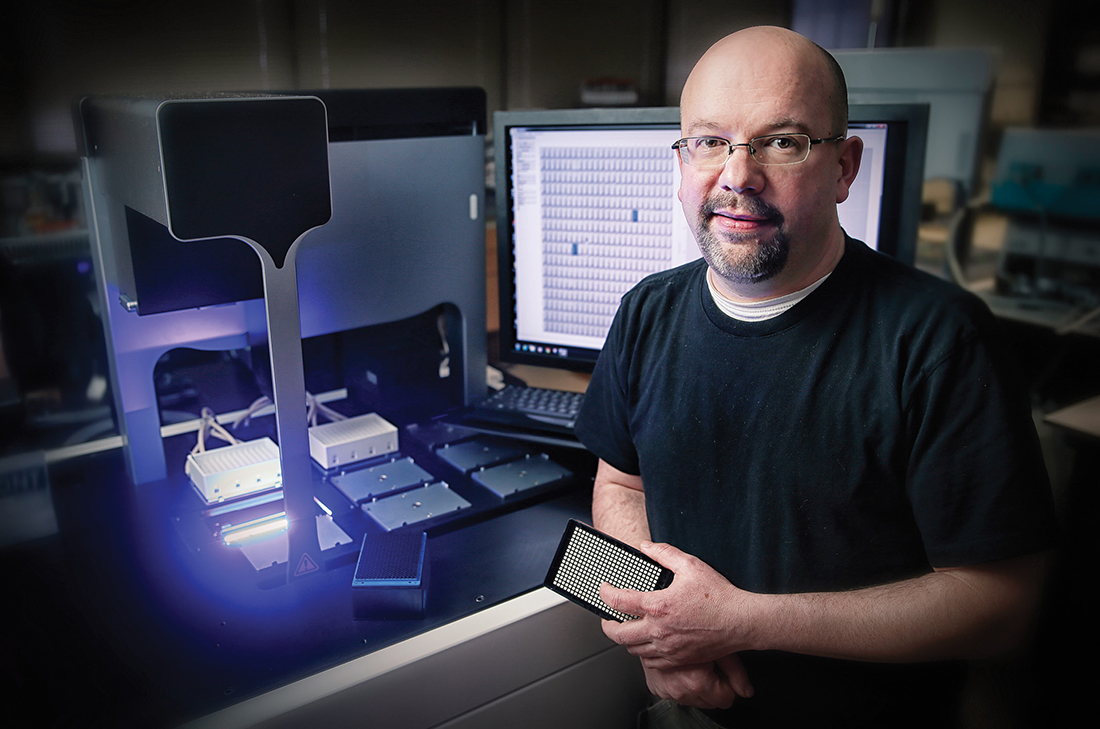‘Laboratory in a Box’ Conducts Thousands of Experiments Simultaneously
David Weaver is out to help drug discovery “bloom” at Vanderbilt University. Weaver came to Vanderbilt in 2004 from the pharmaceutical giant Bristol-Myers Squibb to develop and lead its High-Throughput Screening (HTS) facility, used today by about 50 university scientists to search for compounds with “drug-like” activity.
But he’s not sitting on his laurels. Always looking for ways to improve the quality of the screens, Weaver, scientific director of the HTS facility and co-founder of Wavefront Biosciences, wasn’t satisfied with the quality of the images produced by industrial-grade HTS instruments.
So, with partners Brian Greenway and John Vinson, both engineers, he came up with a new device that he considers to be a major improvement.

Consisting of a microlens array resembling an insect’s compound eye atop a large-format telecentric lens, it can generate images of multiple individual cells in each of the 384 wells in an imaging plate at up to 10 images per second, thereby conducting up to many thousands of experiments simultaneously. Weaver believes it’s the first 384-channel, HTS-compatible parallel microscope, the first “HTS laboratory in a box,” integrating robotic sample handling and advanced data-analysis software.
“We hope our device will enable scientists to make measurements they never were able to make before in an HTS laboratory,” he says, “leading to even more rapid advancements in our drug-discovery efforts.”
Weaver “is the creative genius behind a lot of the technology and screening that has enabled all the early stage drug-discovery efforts to flourish,” says Lawrence Marnett, director of the Vanderbilt Institute for Chemical Biology, which oversees the HTS facility. “Because of everything that’s been put in place here, and the general level of knowledge and people who are very biologically oriented … [they] are able to do some pretty exciting stuff that lets them take the first steps toward trans-lating their discoveries into new therapies.”
Marnett’s lab, for example, is designing selective cyclooxygenase-2 (COX-2) inhibitors that potentially could treat a wide range of conditions, from cancer to anxiety.
Borden Lacy, associate professor of pathology, microbiology and immunology and biochemistry, is studying toxins produced by the bacterium Clostridium difficile (C. diff), the primary cause of hospital-acquired diarrhea. Her goal is to find compounds that prevent the toxins from killing epithelial cells lining the colon.
“The ability to dissect the effects of these toxins with defined chemical tools has revealed unexpected steps in their mechanism of action and is taking our research program in exciting new directions,” Lacy says.